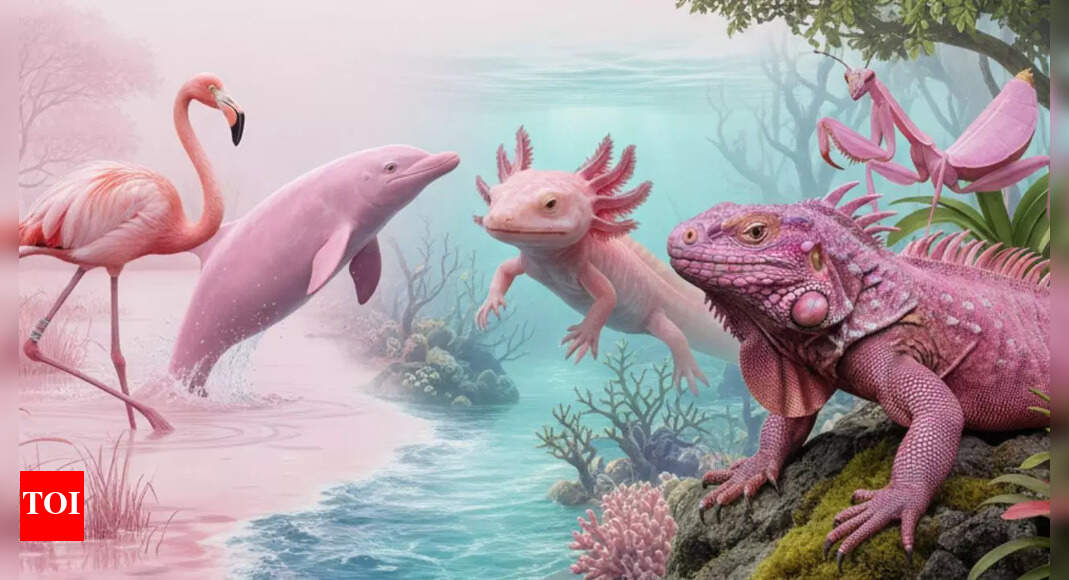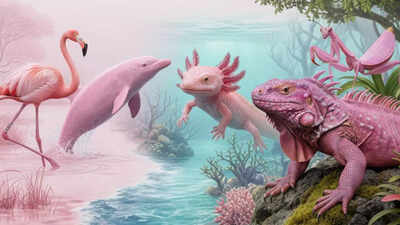 Pink is not a common colour in the natural world, which makes pink animals especially striking. Their unique hues come from diet, genetics, and sometimes rare mutations. In some cultures, these animals are seen as symbols of love, luck, or beauty.From Indian wetlands to the forests of South America, here is a list of fascinating creatures that show off the colour pink in nature.1. FlamingoThe flamingo is perhaps the world’s most famous pink bird. Its colour comes from a diet rich in algae and crustaceans that contain carotenoids. India is home to two species, the greater flamingo and the lesser flamingo, often spotted in Gujarat’s Kutch region and Mumbai’s Sewri mudflats. Every winter, thousands migrate to Indian wetlands, turning them into a spectacle of pink.
Pink is not a common colour in the natural world, which makes pink animals especially striking. Their unique hues come from diet, genetics, and sometimes rare mutations. In some cultures, these animals are seen as symbols of love, luck, or beauty.From Indian wetlands to the forests of South America, here is a list of fascinating creatures that show off the colour pink in nature.1. FlamingoThe flamingo is perhaps the world’s most famous pink bird. Its colour comes from a diet rich in algae and crustaceans that contain carotenoids. India is home to two species, the greater flamingo and the lesser flamingo, often spotted in Gujarat’s Kutch region and Mumbai’s Sewri mudflats. Every winter, thousands migrate to Indian wetlands, turning them into a spectacle of pink.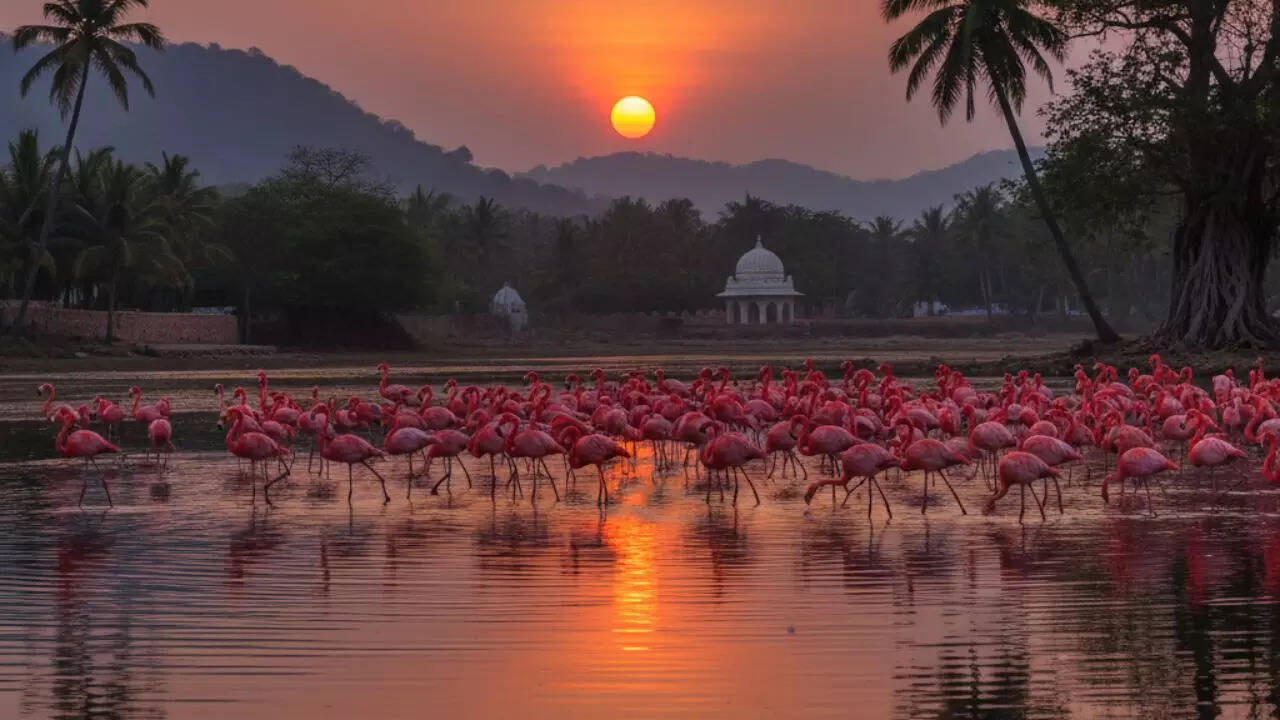 2. Roseate SpoonbillFound in the Americas, the roseate spoonbill looks like a flamingo at first glance but has a distinct spoon-shaped bill. Its feathers are bright pink with touches of red and orange. These birds feed in shallow waters, sweeping their beaks side to side to catch fish and insects.
2. Roseate SpoonbillFound in the Americas, the roseate spoonbill looks like a flamingo at first glance but has a distinct spoon-shaped bill. Its feathers are bright pink with touches of red and orange. These birds feed in shallow waters, sweeping their beaks side to side to catch fish and insects.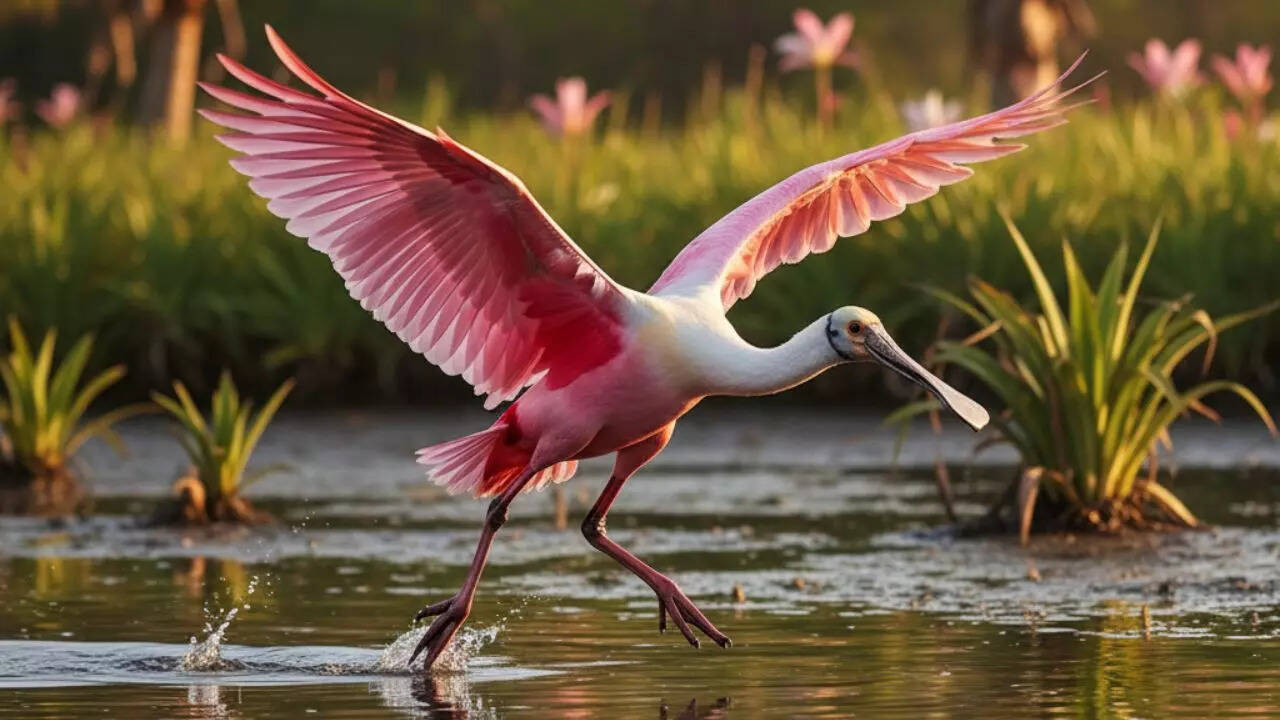 3. Amazon River DolphinAlso called the pink river dolphin or boto, this freshwater dolphin is found in the Amazon and Orinoco river systems. The pink shade is most visible in males and often deepens with age. Scientists believe the colour comes from scar tissue from social fights or a mix of blood vessels close to the skin.
3. Amazon River DolphinAlso called the pink river dolphin or boto, this freshwater dolphin is found in the Amazon and Orinoco river systems. The pink shade is most visible in males and often deepens with age. Scientists believe the colour comes from scar tissue from social fights or a mix of blood vessels close to the skin. 4. AxolotlThe axolotl, sometimes called the “Mexican walking fish,” is an aquatic salamander famous for its ability to regenerate limbs. While wild axolotls are brownish, captive-bred varieties include pale pink or even albino types with pink gills. They have become a symbol of resilience in conservation discussions.
4. AxolotlThe axolotl, sometimes called the “Mexican walking fish,” is an aquatic salamander famous for its ability to regenerate limbs. While wild axolotls are brownish, captive-bred varieties include pale pink or even albino types with pink gills. They have become a symbol of resilience in conservation discussions.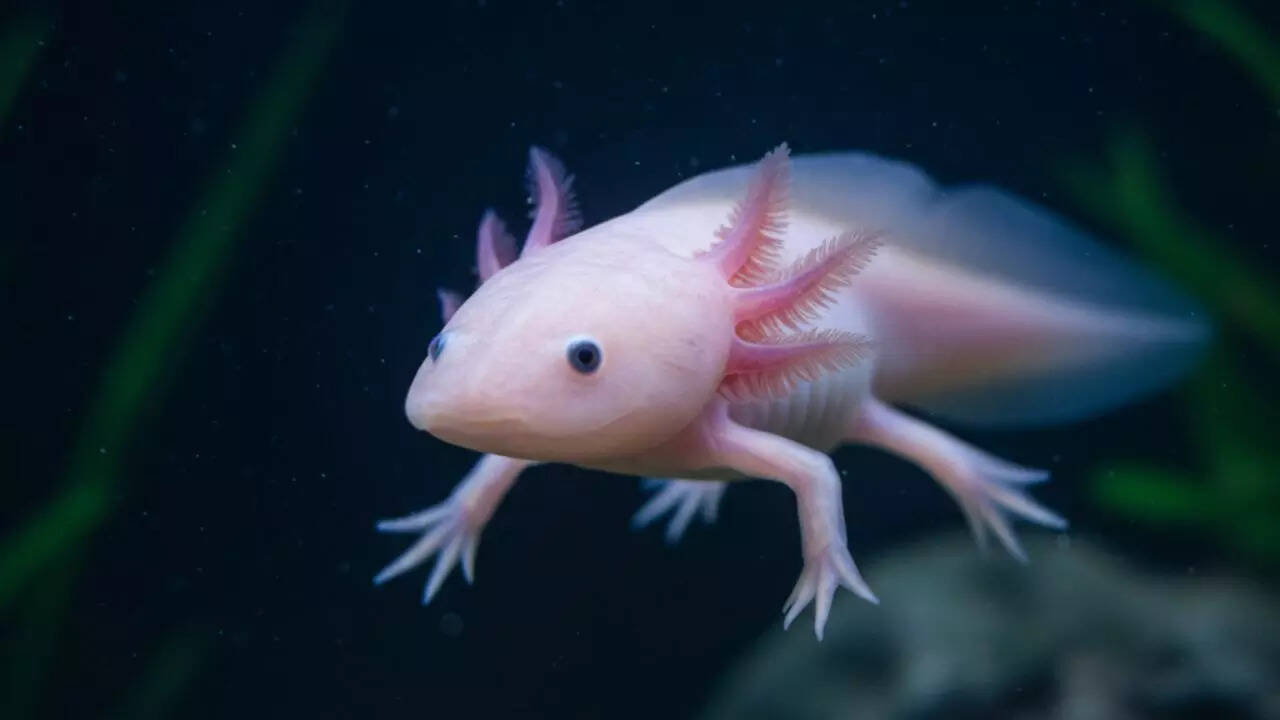 5. Sea Star (Pink Starfish)Not all starfish are orange. Some species, like the pink starfish, display beautiful pale shades of pink. Found in coastal waters around the Pacific, they are important for marine ecosystems as predators of shellfish. Their vibrant colour makes them popular in photography and aquariums.
5. Sea Star (Pink Starfish)Not all starfish are orange. Some species, like the pink starfish, display beautiful pale shades of pink. Found in coastal waters around the Pacific, they are important for marine ecosystems as predators of shellfish. Their vibrant colour makes them popular in photography and aquariums.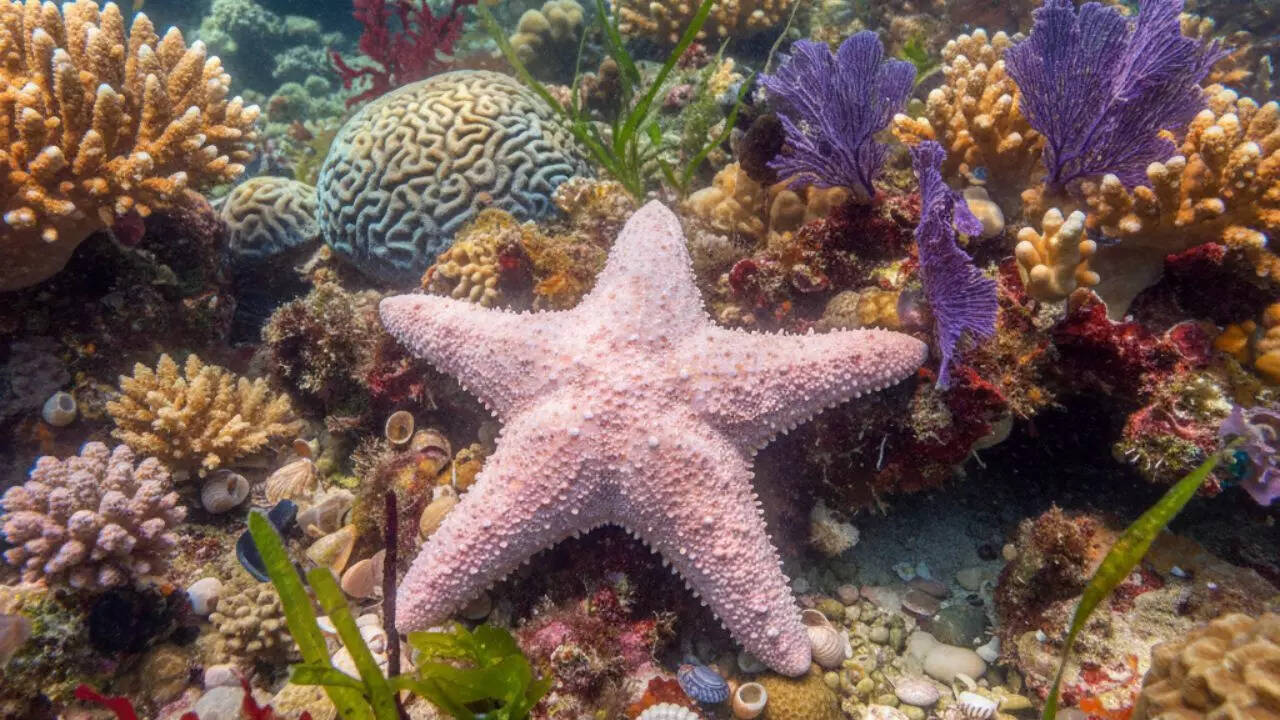 6. Rose-Ringed ParakeetCommonly seen across India, the rose-ringed parakeet is usually green. However, rare mutations produce pink or rosy-hued birds. These individuals are extremely rare and often become sought after by breeders. The presence of such parakeets highlights India’s role in the global story of pink animals.
6. Rose-Ringed ParakeetCommonly seen across India, the rose-ringed parakeet is usually green. However, rare mutations produce pink or rosy-hued birds. These individuals are extremely rare and often become sought after by breeders. The presence of such parakeets highlights India’s role in the global story of pink animals.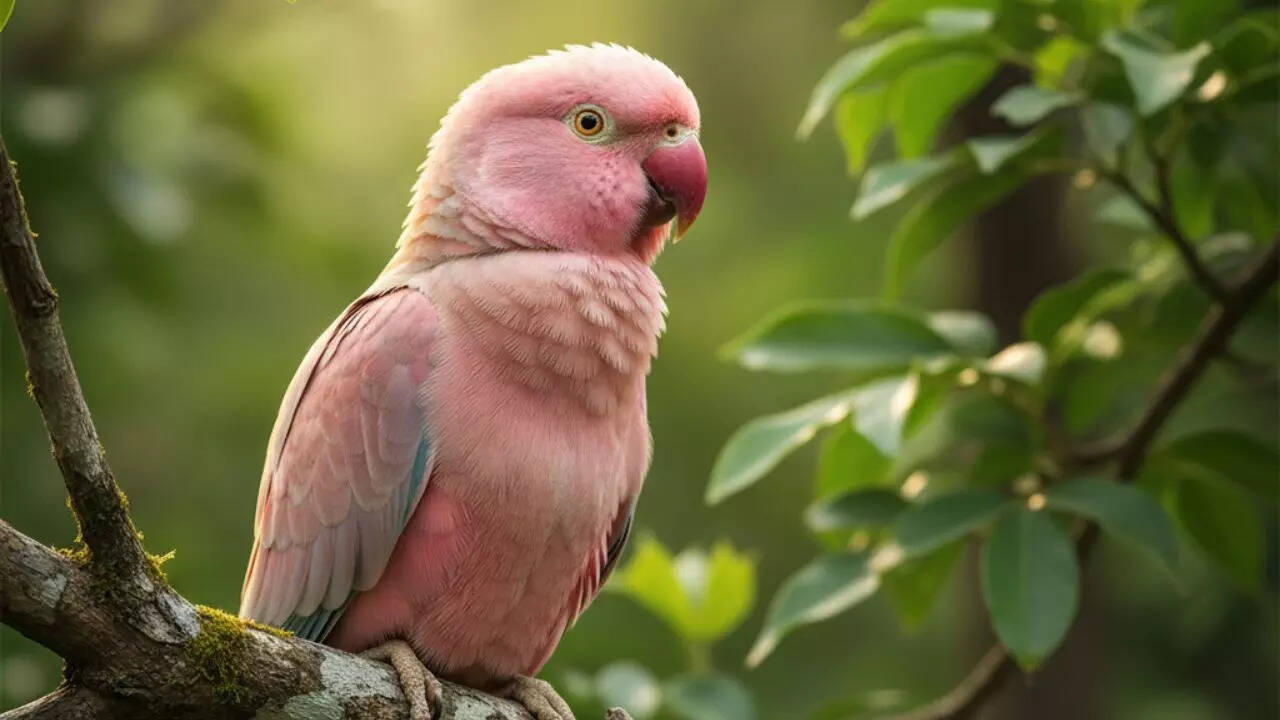 7. Orchid MantisThis insect, native to Southeast Asia, has petal-like limbs that resemble orchid flowers. Many individuals are white, but some carry a pink blush that enhances their camouflage among blossoms. The orchid mantis is a remarkable example of colour evolution in the insect world.
7. Orchid MantisThis insect, native to Southeast Asia, has petal-like limbs that resemble orchid flowers. Many individuals are white, but some carry a pink blush that enhances their camouflage among blossoms. The orchid mantis is a remarkable example of colour evolution in the insect world.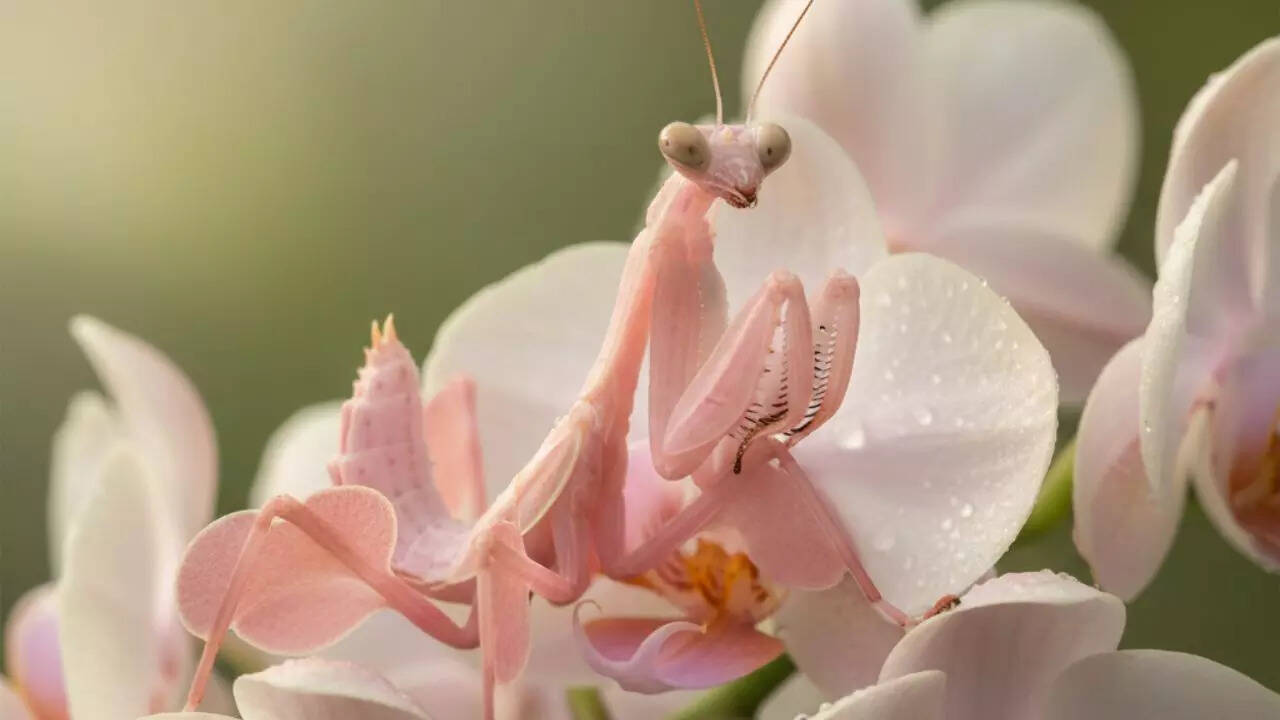 8. Galápagos Pink IguanaDiscovered only in 1986, the Galápagos pink iguana is critically endangered, with fewer than 200 believed to exist. Its unique pink body with dark stripes sets it apart from other iguanas on the islands. Scientists consider it one of the rarest reptiles in the world.
8. Galápagos Pink IguanaDiscovered only in 1986, the Galápagos pink iguana is critically endangered, with fewer than 200 believed to exist. Its unique pink body with dark stripes sets it apart from other iguanas on the islands. Scientists consider it one of the rarest reptiles in the world.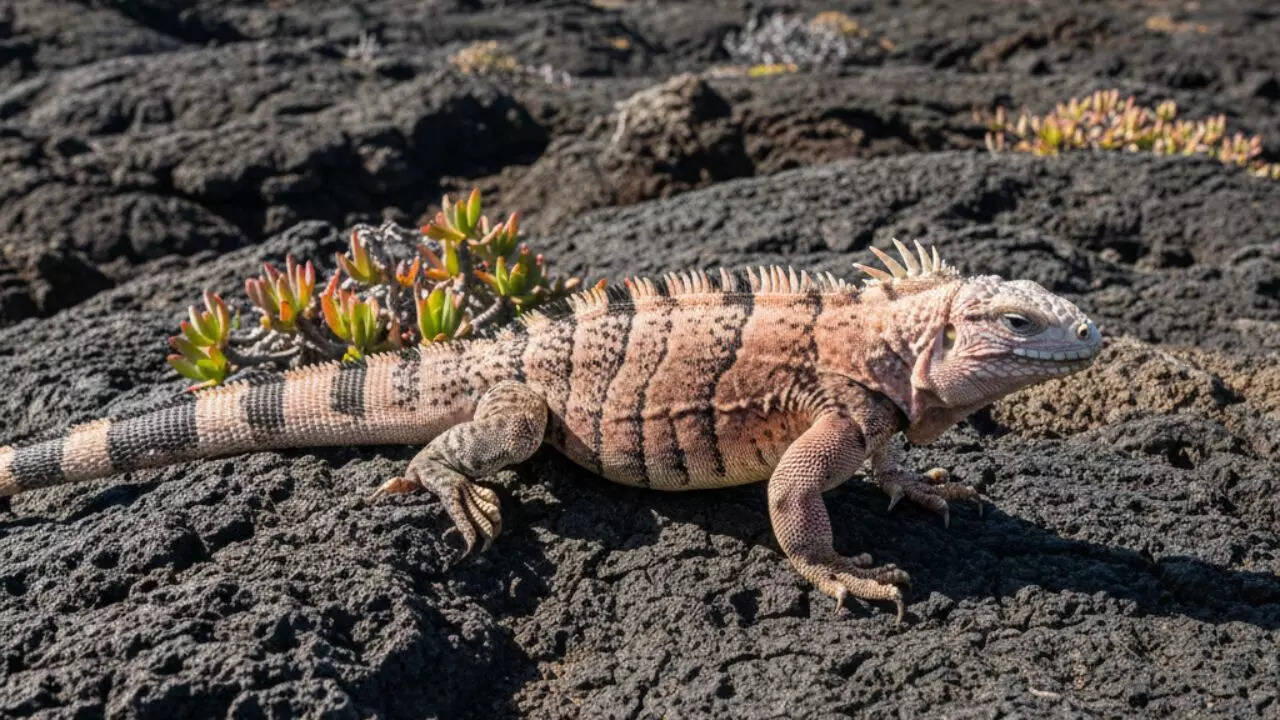 9. Hairy Squat LobsterThis tiny crustacean, covered in hair-like structures, is usually pink or purple. Found in coral reefs of the Indo-Pacific, it hides within barrel sponges. Its neon colouring has made it a favourite among underwater photographers.
9. Hairy Squat LobsterThis tiny crustacean, covered in hair-like structures, is usually pink or purple. Found in coral reefs of the Indo-Pacific, it hides within barrel sponges. Its neon colouring has made it a favourite among underwater photographers.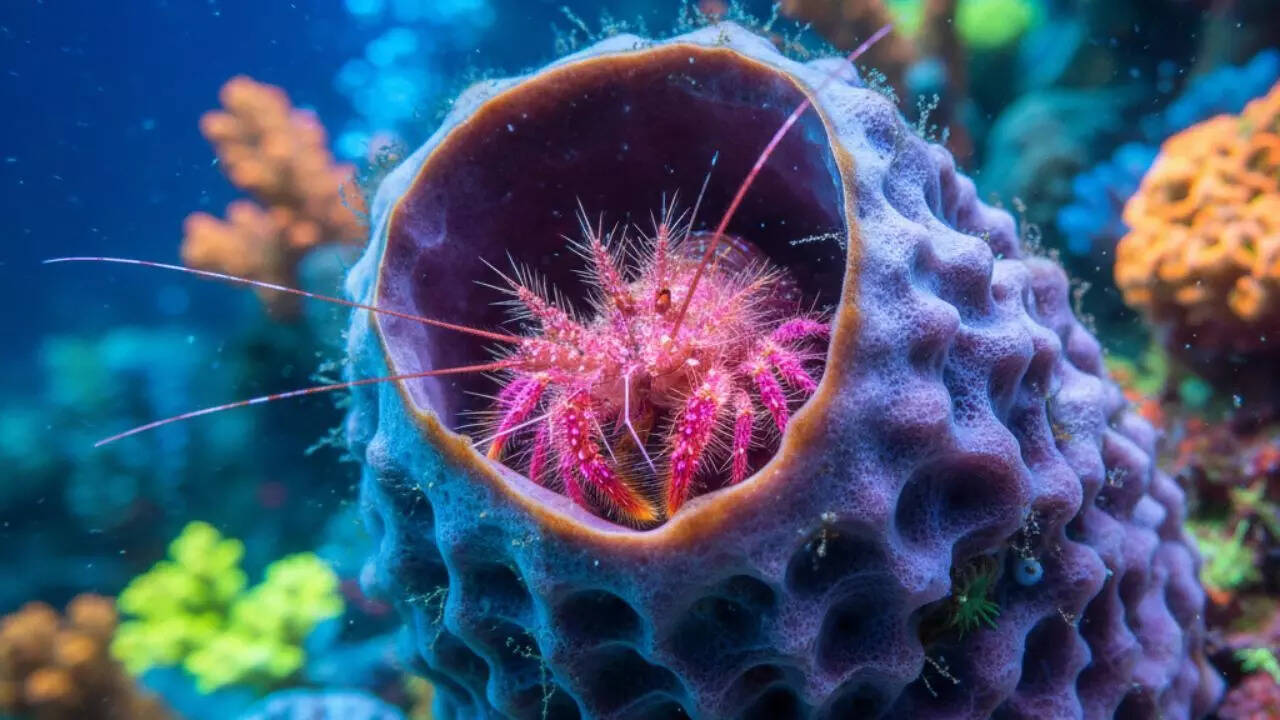 10. Pink KatydidKatydids are usually green, blending into leaves. But genetic mutations can make them appear pink. These rare katydids are striking but more vulnerable to predators since they cannot hide as easily in foliage. They are sometimes spotted in parts of North America and Asia.
10. Pink KatydidKatydids are usually green, blending into leaves. But genetic mutations can make them appear pink. These rare katydids are striking but more vulnerable to predators since they cannot hide as easily in foliage. They are sometimes spotted in parts of North America and Asia.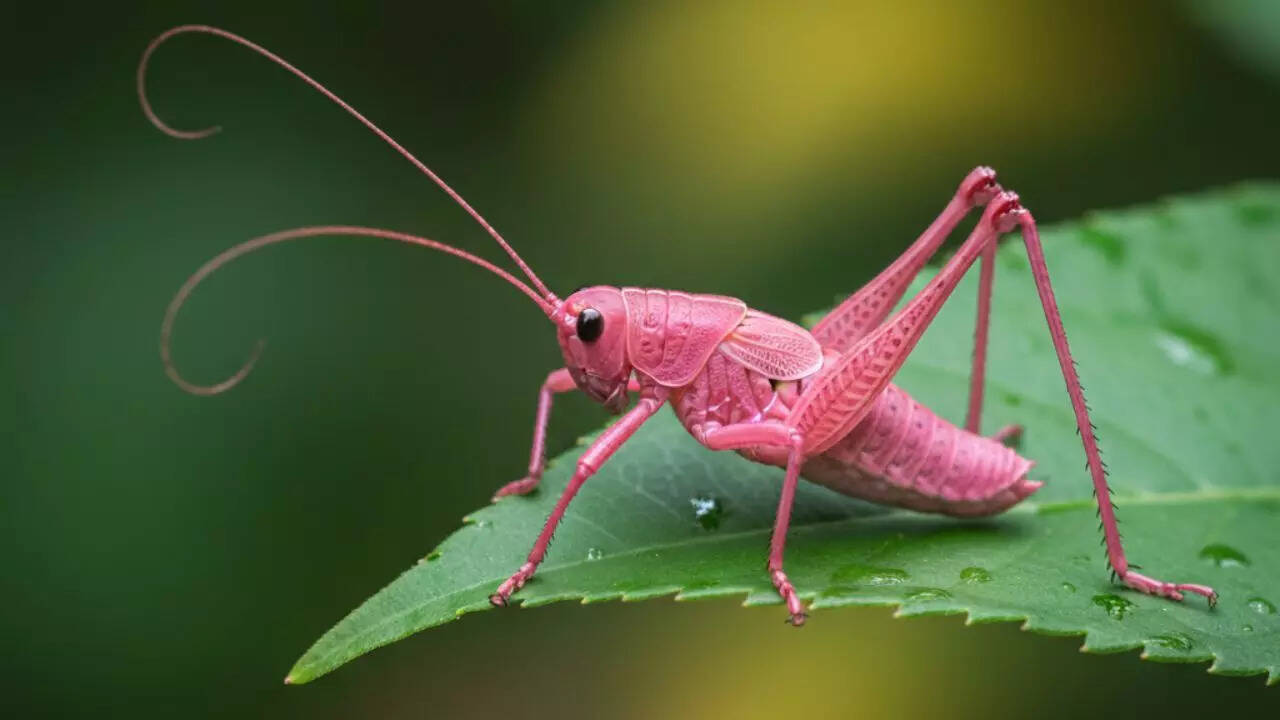 11. Pink GrasshopperLike katydids, grasshoppers with a pink shade are the result of a rare genetic condition known as erythrism. The mutation gives them a reddish-pink body instead of the usual green or brown. Such individuals are uncommon but occasionally seen in India’s countryside.
11. Pink GrasshopperLike katydids, grasshoppers with a pink shade are the result of a rare genetic condition known as erythrism. The mutation gives them a reddish-pink body instead of the usual green or brown. Such individuals are uncommon but occasionally seen in India’s countryside.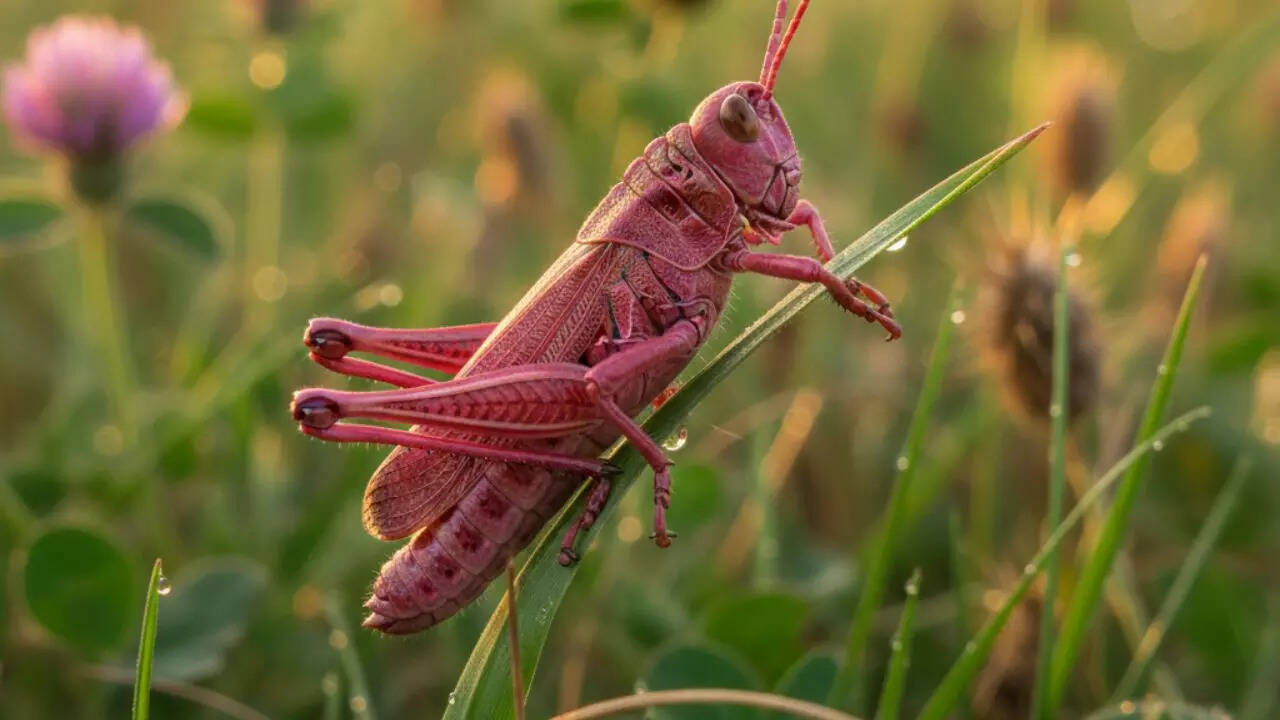 12. Himalayan Cherry Blossom Moth CaterpillarA regional addition from India, the caterpillar of the Himalayan cherry blossom moth often displays bright pinkish tones. While the adult moth is duller, the larval stage is vividly coloured to warn predators of its toxicity.
12. Himalayan Cherry Blossom Moth CaterpillarA regional addition from India, the caterpillar of the Himalayan cherry blossom moth often displays bright pinkish tones. While the adult moth is duller, the larval stage is vividly coloured to warn predators of its toxicity.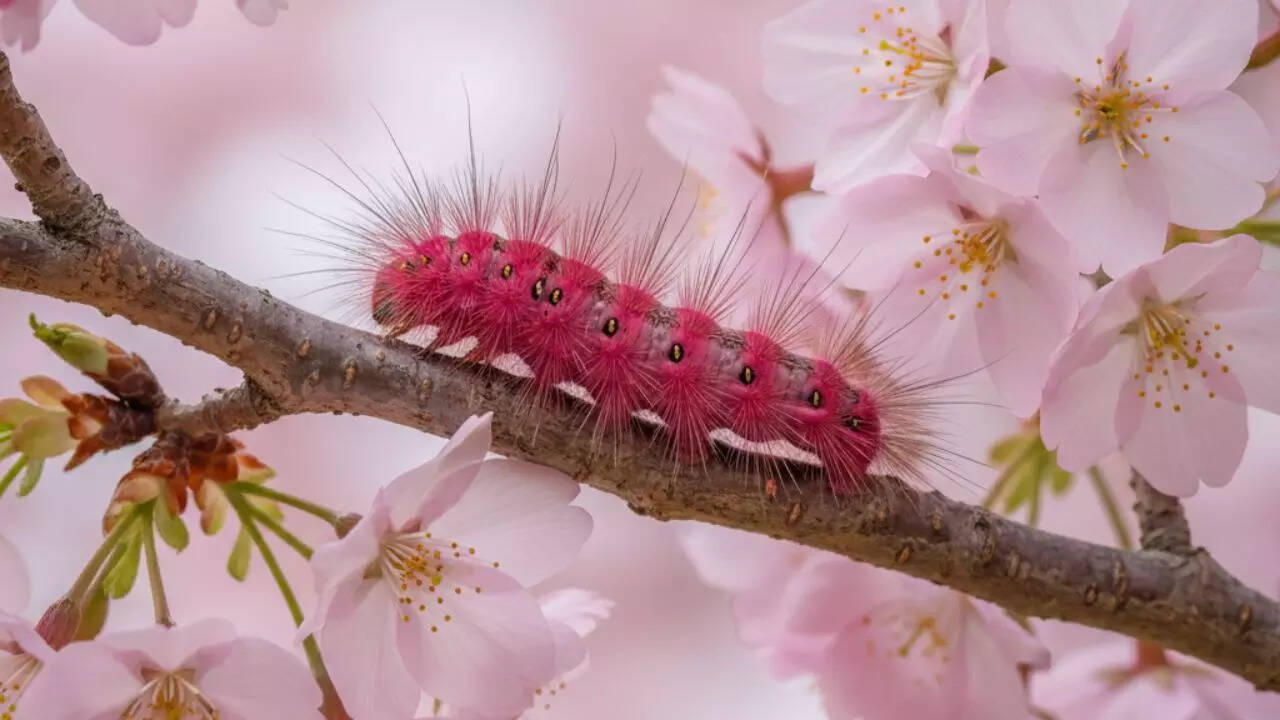
Why are animals pink?
Diet: Flamingos and spoonbills turn pink due to carotenoids in shrimp and algae.Genetics: Katydids and grasshoppers inherit mutations that cause erythrism.Environment: Some shades develop due to habitat conditions or camouflage needs.Age or health: River dolphins and axolotls show colour shifts as they grow.
Cultural and conservation significance
In India, flamingos are celebrated as a symbol of seasonal migration, drawing tourists and birdwatchers. Globally, pink animals often inspire myths of beauty, luck and transformation. At the same time, several pink species, such as the Galápagos iguana and the Amazon dolphin, are under severe conservation pressure.Protecting these animals means preserving not just their colour but the ecosystems they represent — wetlands, rivers, forests and coral reefs.

